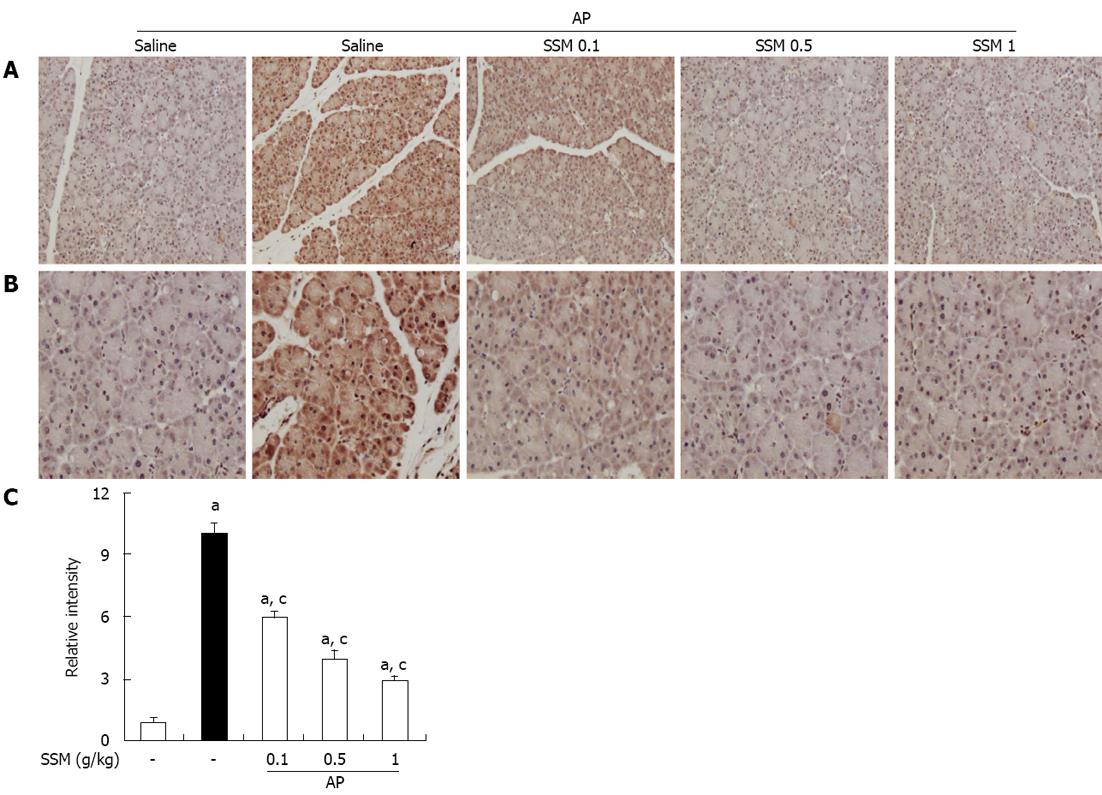Copyright
©2013 Baishideng Publishing Group Co.
World J Gastroenterol. Mar 14, 2013; 19(10): 1551-1562
Published online Mar 14, 2013. doi: 10.3748/wjg.v19.i10.1551
Published online Mar 14, 2013. doi: 10.3748/wjg.v19.i10.1551
Figure 5 Effects of Scolopendra subspinipes mutilans on pancreatic high-mobility group box protein-1 expression in cerulein-induced acute pancreatitis.
A, B: 200 × (A) and 400 × (B) magnification of representative immunohistochemical data, detecting high-mobility group box protein-1 (HMGB-1) expression in pancreatic tissue sections of control mice and mice pretreated with Scolopendra subspinipes mutilans (SSM) (0.1, 0.5, or 1 g/kg) 1 h before the cerulein (50 μg/kg)-mediated induction of acute pancreatitis (AP). Mice were sacrificed 6 h after the last cerulein injection; C: Relative intensity of HMGB-1 staining was scored as described in Materials and Methods. Data are represented as mean ± SE (n = 6 in each group). The results were similar in 3 further experiments. aP < 0.05 vs control group, cP < 0.05 vs cerulein treatment alone.
-
Citation: Jo IJ, Bae GS, Park KC, Choi SB, Jung WS, Jung SY, Cho JH, Choi MO, Song HJ, Park SJ.
Scolopendra subspinipes mutilans protected the cerulein-induced acute pancreatitis by inhibiting high-mobility group box protein-1. World J Gastroenterol 2013; 19(10): 1551-1562 - URL: https://www.wjgnet.com/1007-9327/full/v19/i10/1551.htm
- DOI: https://dx.doi.org/10.3748/wjg.v19.i10.1551









